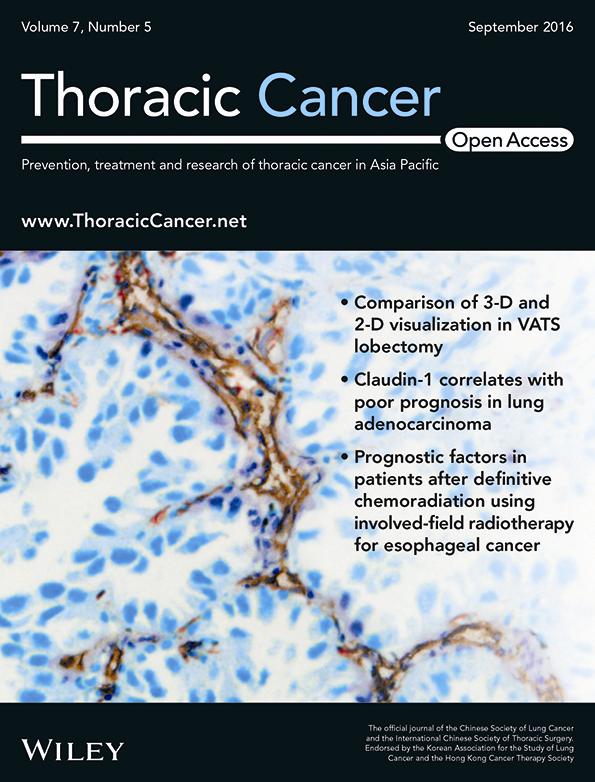Autonomic nervous infiltration positively correlates with pathological risk grading and poor prognosis in patients with lung adenocarcinoma
Abstract
Background
Perineural invasion has been found in several types of human tumors, and is associated with poor prognosis; however, few studies have examined perineural invasion in lung cancer. We evaluated the relationship between autonomic nervous densities, pathological risk grading, and prognosis in patients with lung adenocarcinoma (LADC).
Methods
Neural fiber expression was examined by immunofluorescence in resected lung specimens in control patients (n = 30), and low-risk (n = 22), and high-risk LADC patients (n = 43). The nerve densities of normal lung tissue and abnormal lung tissues in the tumor and surrounding tissues were evaluated by a semi-quantitative score method.
Results
Increased sympathetic fibers mainly infiltrated the paratumoral area, while increased parasympathetic fibers were largely restricted to the tumor (paratumor vs. tumor, P = 0.000 in high, P = 0.034 in low; each). In addition, high-risk patients presented the highest density of neural fibers, followed by low-risk and control patients ( P = 0.000; each). In Kaplan–Meier survival analysis, the densities of sympathetic fibers in paratumoral tissue and parasympathetic fibers in the tumor, respectively, correlated with poor recurrence-free survival in patients who were not treated with adjuvant therapy ( P < 0.001; each). Further multivariate analysis showed that these two factors were associated with poor prognosis in all LADC patients ( P = 0.024 sympathetic fibers; P = 0.037 parasympathetic fibers).
Conclusion
These findings reveal a positive correlation between nervous infiltration and risk of poor prognosis in patients with LADC.




